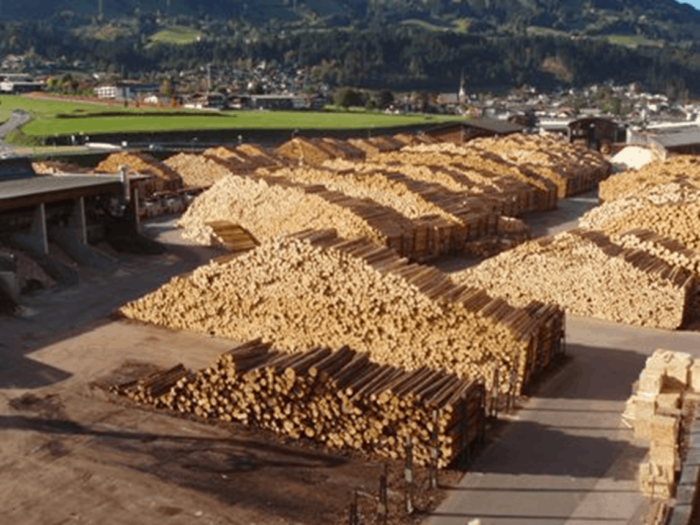You need help planning, managing, or implementing biomass projects like biomass heating plants? Contact us now!
What is thermochemical conversion of biomass and what is the biomass conversion process?
Explaining the thermal conversion of biomass is talking first about the chemicals. As biomass is stored carbon, all conversion of biomass to any other form of energy will go the same path.
1. In the early beginning of the thermal conversion all volatile components will pushed out buy an ignition heat source. This ignition heat source can be generated by the biomass itself, due to self-heating processes or can be a heat source from outside by meaning of using a match to light up your fire. In this very early step, the very volatile components will catch up fire easily and will energize the solid or liquid state of aggregation two a gasified state of aggregation. This first step is called gasification of biomass and is often described as a separate technology in some reports, but it is only the early first step of burning biomass without sufficient oxygen around.
2. If enough oxygen is around this gas from biomass will light up very easy and will support more energy to the solid or liquid state of aggregation for the remaining biomass. In the second step the oxygen surrounding the fire will ensure that all available carbon components will be oxidized to CO2 completely. This oxidization is a release off the remaining energy for all biomass and can be used in different heat and power plants. The greatest advantage of using biomass is the fact, that biomass has not only stored carbon in a pure form. It comes in a biological form with different ingredients specified by the species of plant and the type of biomass.
What are the sources of biomass?

To understand this in a little overview it is very important to know, that we talk about the availability of different types of biomasses. Looking on our landscape we see that we use agriculture biomass mainly to feed our family, producing plants to feed our livestock and for infrastructure. Remaining landscape is uncultivated land and forest. In some places the agriculture production is supported by incentives, so the level of production allows also to produce energy on agriculture areas because these countries do over production already. The agriculture biomass energy usually comes in two different forms, one is the direct usable liquid fuels (rape oil for example can be converted to diesel fuel) or feed for the digestion system like biogas or ethanol plants producing heat and electricity or fuel for vehicle.
Wood is mainly produced in sustainable forest production or as plantation wood on conversion landscape. Wood grows on approximately 30% of our landscape and is by far the most important energy source for solid biomass. This type of biomass can be used in different ways and this biomass fiber is used for existing processing units like sawmills, particleboard plants, OSB plants or paper mills. Only from sawmills we can gain residuals to produce bioenergy like wood pellets.
Investigating into the forest industry we learned, cutting a tree makes the forest grow. Healthy forests will not have a huge number of old trees which are close to the stage of dying. The most productive way off managing a forest is to do signing and harvesting on a regular base. The remaining trees will be strong and healthy and fighting against weather conditions and will protect the soil. There are different ways of treating forest areas in a sustainable way and we still have enough green forests in place to ensure the capturing of CO2 and the production of O2. To ensure the sustainability of using forestry areas for energy use, different certification schemes are available for the off-taker of this biomass. FSC (https://us.fsc.org/en-us/certification) and PEFC (https://www.pefc.org/) are only two of many systems which are already in place and well known to the end user and all investors.
Using solid biomass from forest: What are the primary products when burning biomass to above 850° C
Using wood directly is the oldest way of taking this energy source to upgrade our lives. As we all know that wood has still a water content of more than 50% when it is harvested, we understand that this wood will not burn on a normal fireplace. Therefore, the investigation of using this wood in technical energy plants is already done in the early beginning of industrialization. There are still different types of technology available and there are specified to use biomass in a certain particle size and water content.
different types of technology
1. The most flexible type of firing system is a great firing system. On this type of system, you can burn small and big particles and wet and dry particles just by changing different characteristics on the system. The system will be used up to 50MW combustion power. This system is the most important one and is used in the most wood firing system. To complete the picture of available system the following systems are also possible to use for biomass:
2. Stair grate firing is also a variation of a grate firing system and used form some supplier
3. Grate firing stages is also a variation of a grate firing system
4. Around grate firing is also a variation of a grate firing system
5. Traveling grate firing is used for bigger power plants like more than 100MW combustion and in the past often used for coal but can be converted to biomass.
6. Fluidized bed combustion as stationary or circulated version is used for biomass when the fuel is clean and over 50MW is expected.
7. Underfeed combustion is used when the water contend is below 25% and the biomass has low ash content. This system is often used in bigger pellet burning units and cost effition doing this.
8. Injection firing is used for dry biomass (powder). Like all the coal plants using biomass as a co firing fuel. Smaller units are used to burn residues from particle bord plants for internal energy generation for example.
Beside the firing types of using biomass in combustion systems there is also the type of boilers which are different. The boiler is the part of a energy plant who will get the energy from the burning process (flue gas) into the medium (water or oil) to run the energy system (turbine, heat system or both). As well as the firing system also the type of boiler needs to fit too, to the type of Biomass. The types of water boilers are generally divided in tree types.
Types of water boilers
1. Smoke tube boilers are used for medium sized furnaces up to 15-20 megawatts of firing capacity and to a steam pressure up to 30bar approximately.
2. Water tube boilers are the most flexible types of boiler and are used in a white variety. This type of boiler has not really a limitation on capacity but as it is more expensive as a smoke tube boiler it will be used in furnaces bigger than 15-20 MW.
3. Thermo oil boiler is a special type of boiler and is compared to the other two not filled with water. The use of a synthetic oil in this type of boiler is needed to run the ORC (Organic Rankine Cycle) process. The great advantage of this type of system is the low pressure which is needed to heat up the synthetic oil and to run the ORC system in a sufficient and on a low maintenance basis. This type of boiler will be often used in small and medium sizes when the need for heat on a low temperature level is required. The electricity efficiency is up to 19% for this type of technology and therefore only recommended if electricity is not the focus.
Using energy from biomass is the oldest way of converting renewable energies for all our needs. Explaining the different types of technologies shows the deep knowledge needed to find the right solution for different circumstances. Knowledge, this is the key role for any engineering company designing heat plants, power plants or CHP plants (Combined heat and Power) for any client. All this starts with the type of available biomass and will be designed to fulfill the quality and demand of the energy needed.
Conclusion
The text above gives a small overview about the key points of using bioenergy and explained hopefully the advantages of bioenergy and biomass energy to all human being. In the future it is more than important that not only the production of renewable energy, like wind and solar will increase. We also need to implement in our energy system an easy storable renewable energy like biomass. We are your partner to gain this target. Let us do it together!
